Every other Friday, Yossy Arefi from Apt. 2B Baking Co. shares dessert projects that demand a little extra time and effort. Because your weekends should always be sweet.
Today: The difference between bread and dessert is just a few ounces of butter (and, hey, maybe some sugar too).
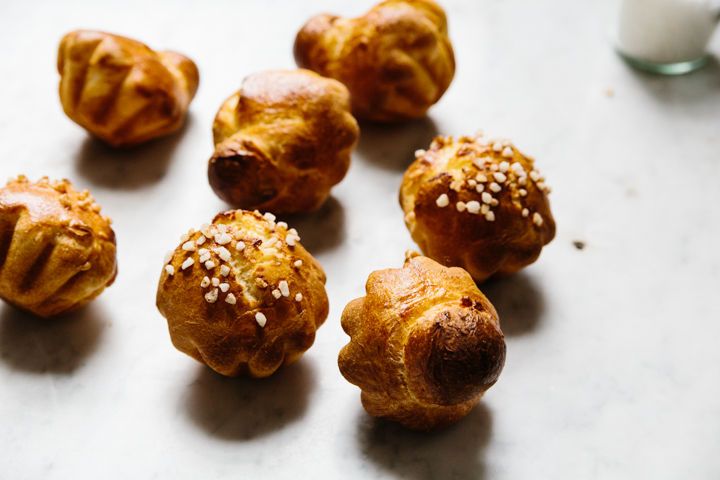
In baking terms, brioche is considered a viennoiserie, meaning that it is made from a yeast dough enriched with other ingredients that swings it a little closer to pastry than bread (another popular viennoiserie is the croissant). In brioche's case, that richness comes from milk, eggs, a bit of sugar, and a seemingly impossible amount of butter -- 6 ounces per loaf, to be exact.
All of that butter makes the most luxurious, fluffy dough, and let me tell you, a loaf of brioche baking away in the oven has the most intoxicating smell: warm, yeasty and very, very buttery. While you may not consider bread a dessert, try slathering a slice with Nutella and a sprinkling of sea salt, then tell me it's not a sweet treat.
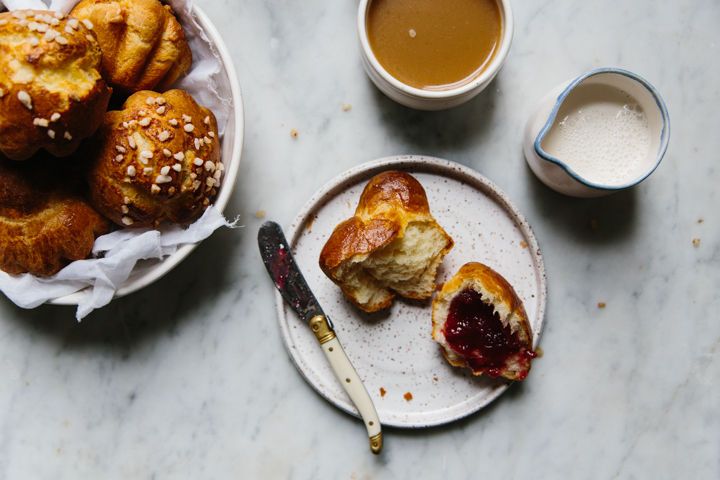
To make your own, you'll need to start with with a simple enriched bread dough, to which you'll add a very generous amount of butter. Then you have some choices to make: Do you want to make loaves that will be perfect to slice, then use for French toast or bread pudding? Or is it individual-sized treats that you're after? Below, you'll find instructions to shape the dough a couple of ways -- and don't worry, this recipe makes enough for you to try both.
Brioche
Makes 2 loaves or 16 individual brioches
4 teaspoons active dry yeast
1/3 cup water, at 110º F
1/3 cup milk, at 110° F
2 tablespoons sour cream or yogurt
4 cups all-purpose flour
2 teaspoons salt
3 tablespoons sugar
4 large eggs
3 sticks (12 ounces) unsalted butter, cool but pliable
2 tablespoons pearl sugar (optional)
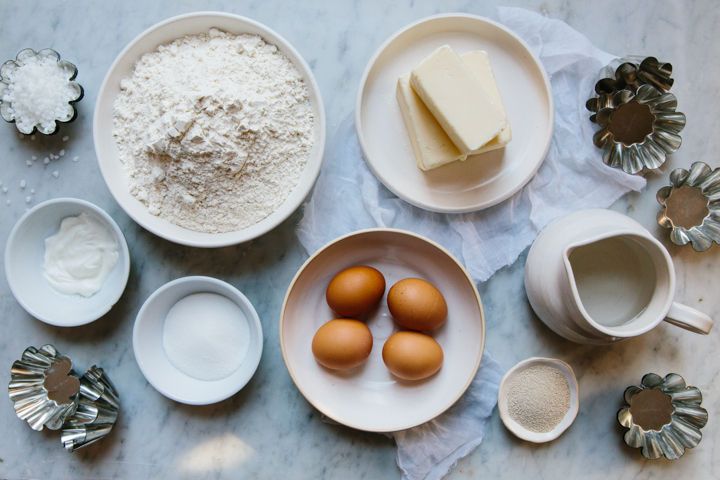
Put the yeast, milk, and water in the bowl of a stand mixer and stir gently to combine. Let it sit until it bubbles, about 5 minutes.
Add the flour and salt, then use the dough hook to stir the flour into the yeast mixture on low speed. Stop the mixer a few times and use a spatula to scrape the sides of the bowl. The dough will be very shaggy and dry.
Add the eggs and sour cream or yogurt. Mix gently to combine, then add the sugar. Turn the mixer up to medium-low and mix until the dough forms a ball, about 4 minutes.
Turn the mixer back down to low and mix the butter into the dough in 2-tablespoon chunks, beating until each piece is almost completely incorporated before adding the next piece. Make sure to take this step nice and slowly to ensure that the dough is evenly mixed and kneaded. Stop periodically to pull the dough from the hook and scrape the sides of the bowl to ensure even mixing. The dough will be very soft and billowy.
Once all of the butter has been incorporated, continue to knead the dough until it pulls away from the sides of the bowl, about 10 minutes.
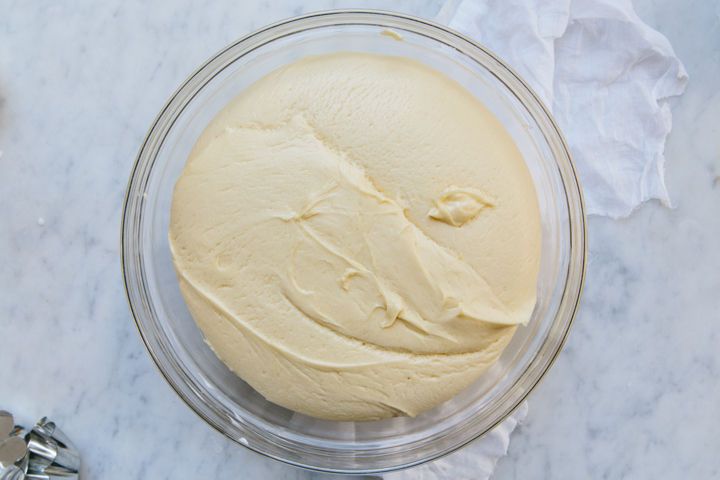
Transfer the dough to a clean bowl and let it rise at room temperature until it has doubled in size, 40 to 60 minutes. Knead the dough in the bowl a few times to release the air, then cover and transfer the bowl to the refrigerator. Check on the dough every half hour or so and gently knead it in the bowl a few times until it is chilled and stops rising, about 2 hours. Let the dough rest at least overnight and up to 24 hours in the refrigerator.
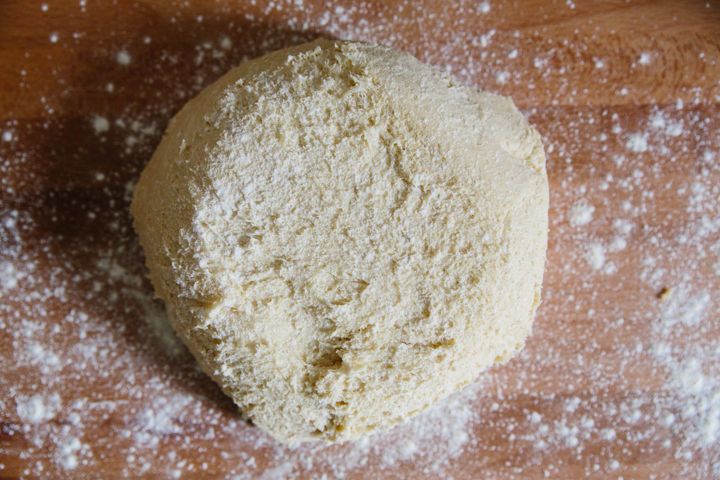
When you are ready to bake, remove the dough from the fridge and, to make loaves, divide the dough into 2 pieces. Divide each piece into 4 pieces and roll each piece into a ball. Arrange the dough balls in two greased loaf pans.
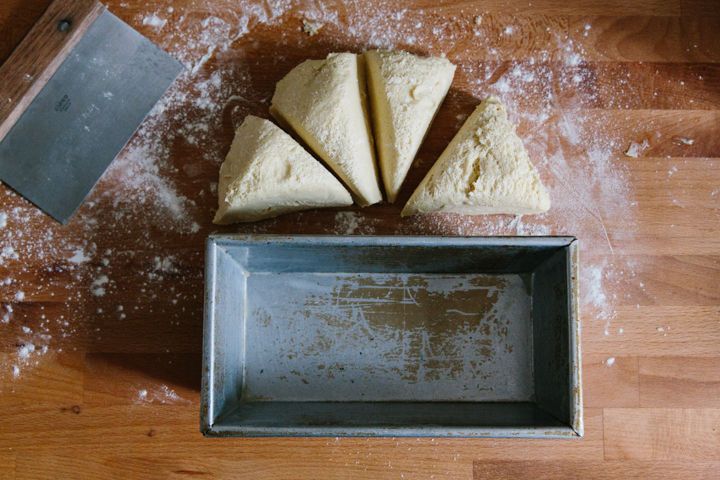
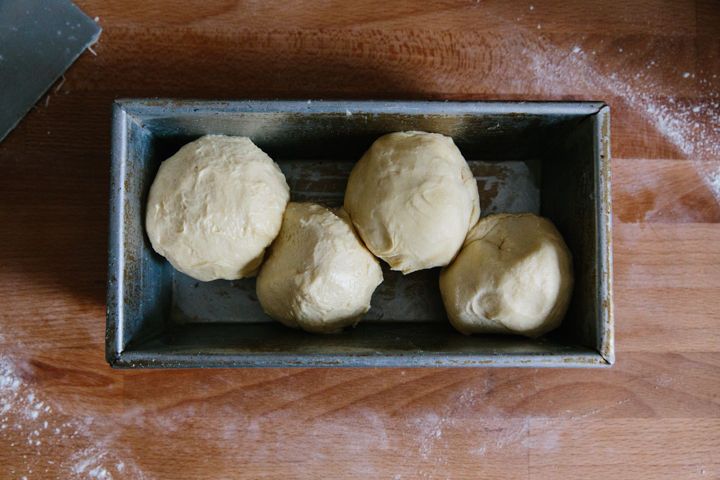
To make individual brioches, divide the dough into 16 equal pieces and gently roll each piece into a tight ball. For round brioches, place the dough balls into well-greased individual pans. For traditional brioche à tête (those little guys with the "heads"), you'll have to do a little more shaping. Flour the pinky side of your hand and place it about 1 inch from the top of the dough. Use the side of your hand and gently roll back and forth while cutting into the dough to make a little ball. The motion should be something like a very delicate, rolling karate chop. You should have a large ball on one side connected to a small ball on the other. Gently move the dough into the prepared tin, with the large part on the bottom. Use your finger to poke a hole in the middle of the large portion of dough and tuck the smaller ball into it. Repeat with the rest of the dough.
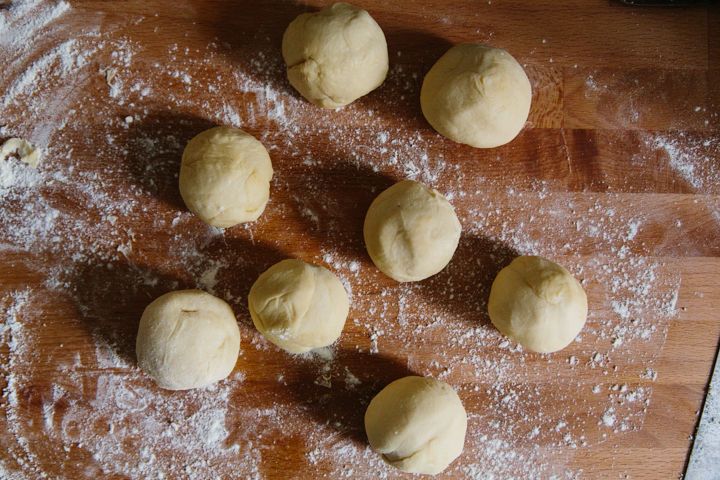
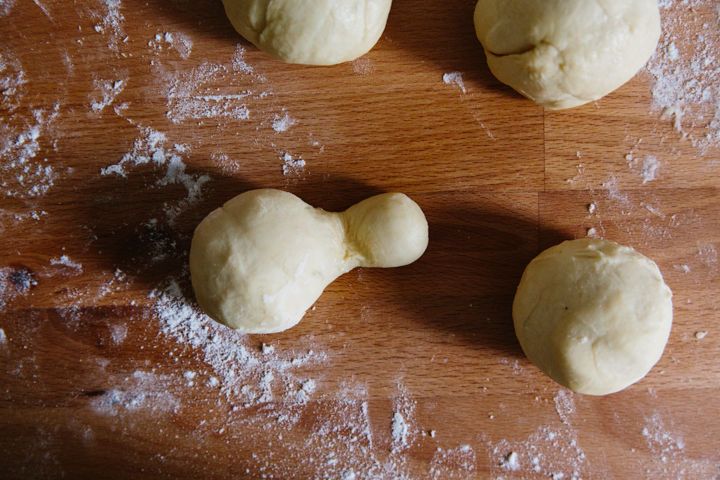
For either loaves or individual brioches, let the dough rise until it reaches the top of the pans. Preheat oven to 400º F and brush the dough with a beaten egg. Sprinkle with the optional pearl sugar, if you're using it.

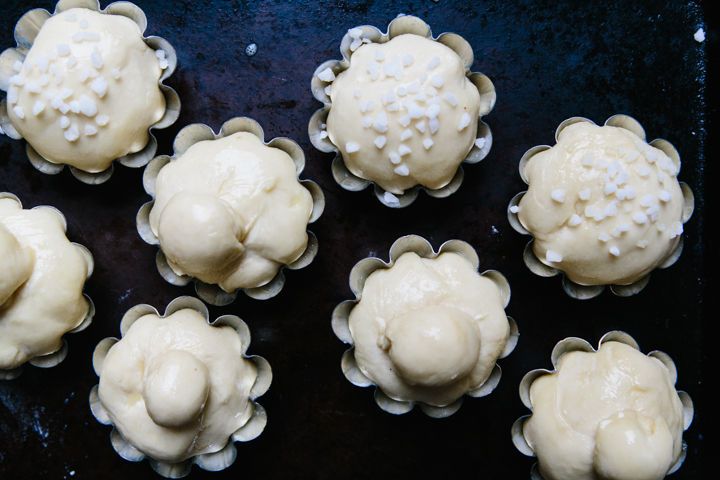
Bake loaves for 25 to 35 minutes or until deep golden brown. Bake individual brioches for 15 to 20 minutes, or until deep golden brown.
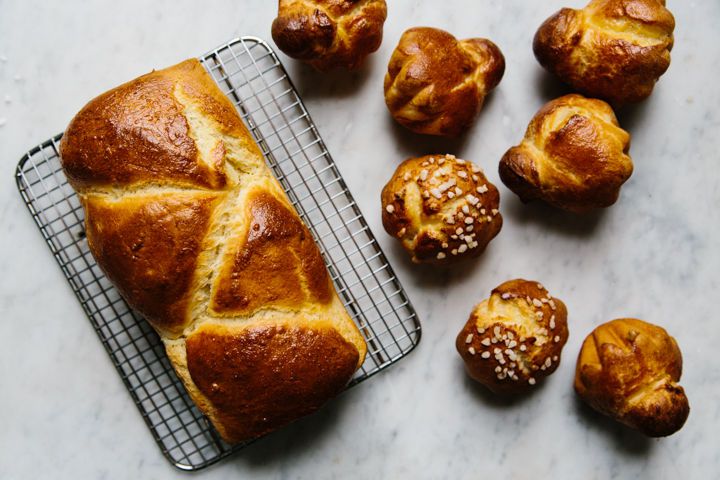
Let the brioche cool in their pans for 5 minutes, then remove to a rack to cool completely.

See the full recipe (and save and print it) here.
Photos by Yossy Arefi














See what other Food52 readers are saying.